The job of every general manager, head coach, scout and many others within an NHL organization is to evaluate players. These evaluations can be the difference between a player starting on the opening night roster or ending up on the waiver wire. Well, in order to confidently write about the 2020-21 Detroit Red Wings, I decided that it was also this writer’s job to evaluate the players that wore the winged wheel this season.
My methods were simple. I watched every single second of every single game the Red Wings played this season. Whenever I noticed a player doing something I deemed to be positive (creating a scoring chance, laying a big hit, getting back on defense, etc.) I noted it. At the same time, if I noticed a player doing something I deemed to be negative (poor defensive coverage, blowing a quality scoring chance, looking disengaged, etc.) I also noted that. This was the ultimate “eye test”: a player passed my eye test if they ultimately did more good than bad.
One thing about that real quick: not all players are created equal. I don’t necessarily think it’s fair to expect the same things out of Sam Gagner that you would out of Filip Zadina. To that point, I did my best to “grade” players like Gagner for what they did or didn’t do as a depth player, while I graded players like Zadina for what they did or didn’t do as a top six player depended on for offense. Seem fair? I hope so.
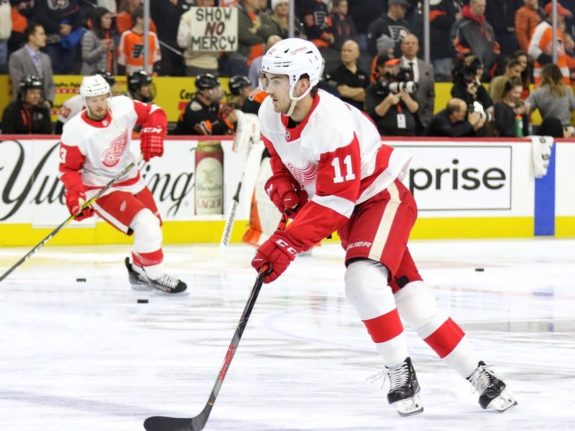
After all was said and done, I went back and adjusted my totals for each player based on their statistics and analytics. The eye test doesn’t always tell the whole story, and neither do the numbers. Together, however, they paint a far more vivid picture.
For this exercise, I will only be including players that played a minimum of 20 games with the Red Wings this season. That is 36 percent of this season and would be around 25 percent of a normal 82-game season. I think that 20 games is a big enough threshold that it excludes any players that might have been outliers based on a very strong performance or a very weak one. To that point, the players that I have excluded are: Tyler Bertuzzi, Taro Hirose, Richard Panik, Givani Smith, Joe Veleno, Jakub Vrana, Alex Biega, Dennis Cholowski, Gustav Lindstrom and Calvin Pickard.
Without further ado, let’s take a look at how your 2020-21 Red Wings fared this season.
Red Wings Forwards
(Ranked in order of most-positive to most-negative)
Dylan Larkin
Despite his worst season, production-wise, since his sophomore campaign back in the 2016-17 season, Larkin was a positive influence on the Red Wings by a ratio of 3:2. I would argue that nobody missed Bertuzzi more than Larkin, but the Red Wings’ captain still found a way to be effective.
Larkin was almost always looking to make a play, and when he couldn’t find one, he would sometimes try to do it by himself – which ended badly more often than it ended well. I don’t think his .52 points per-game (P/G) rate is truly telling of the kind of player he is.
Anthony Mantha
Despite the fact that he now plays for the Washington Capitals, Mantha’s 11 goals with the Red Wings ties him with Adam Erne for the team lead (if you don’t count Vrana’s goals with the Capitals.) I had him as a negative player through the first quarter of the season, but he eventually turned his game around by flashing the offensive instincts that made him so desirable for Washington.
Remember when head coach Jeff Blashill made him a healthy scratch in early February? I genuinely think that helped him turn things around. Would you have liked to have seen more production from the 2013 first round pick? Absolutely, but I think this was a player whose offensive abilities were dulled out by Detroit’s low-event style of play this season.
Filip Zadina
Zadina and Mantha were very close once everything was tallied up. Besides the acquisition of Vrana, I think Red Wings GM Steve Yzerman was willing to move on from Mantha because the 2018 first round pick had essentially taken Mantha’s spot in the lineup. The 21-year-old was another player whose offensive talents were muted by the low-event style, but that didn’t stop him from showcasing some serious playmaking skills.
The most noticeable improvement he made in his game this season was his two-way game. Whether it was a sneaky stick-lift or just his willingness to race back to get back on defense, this is a player that seems eager to become the complete package. His goal for next season: translate that strong two-way play into more offense.
Michael Rasmussen
This is one case where I wonder if I have any biases creeping into my observations. I think we can all agree that Rasmussen made big strides this season, but I’m not so sure that he was Detroit’s fourth-most positive player. Alas, here he is, and he deserves to be commended for the progress he made. I said he was poised for a breakout campaign before the season began, and here we are. There’s zero doubt in my mind that the 2017 first round pick is an NHL player now. He played in all situations this season, beginning his journey to becoming a match-up center in the NHL.
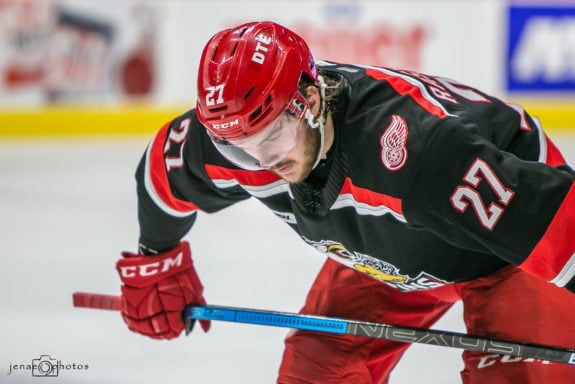
While I don’t think his offense will ever meet the expectations of a ninth overall pick, his lack of production this season did leave something to be desired. This season he learned to work and play like an NHLer; next season he needs to learn how to produce like an NHLer.
Sam Gagner
No, I’m not joking about this. If you were to ask me which player was the most underrated from this season, it would be Gagner. At 31 years old, this is not an “aging veteran that is holding back the youth movement.” I would argue that this is the exact type of veteran support/depth player that the Red Wings should be targeting as they continue their rebuild. He was cheap at $850k, and he played almost exclusively on the third line this season.
I constantly kept noticing smart defensive plays being made by No. 89, and he and Vladislav Namestnikov were able to establish a strong cycle in the offensive zone enough times that I didn’t disregard it as a fluke. His P/G rate of .36 means that he would have scored around 30 points in a full 82-game season. That’s the kind of player his is, and there is value in that as long as that’s what you’re expecting.
Robby Fabbri
If he had been able to play in more than just 30 games this season, there’s no doubt in my mind that Fabbri would be higher on this list – you can’t earn positive marks if you’re not in the lineup. When he was in the lineup, he was one of few Red Wings that seemed capable of regularly creating offense. Over the course of an 82-game season, he was on pace for 27 goals, which is exactly what you’re looking for from a player like him.
I liked him A LOT more on the wing than I did at center. To that point, Fabbri’s positives almost exclusively came from what he did in the offensive zone; he’s not a defensive player, but I wouldn’t necessarily call him irresponsible in his own end. There’s just no reason to straddle him with the responsibilities that come with playing down the middle.
Adam Erne
It’s funny, it felt like Erne’s season was a tale of two halves: he was practically invisible in the front half of the season, and then out of nowhere he exploded and finished the season as Detroit’s top goal scorer. That being said, he had five goals and nine points through his first 22 games, and then followed it up with six goals and 11 points in the following 23 games. The difference is that he collected points on a more consistent basis in the second half, whereas in the first half, he would go off on a single night, and then disappear for the next four or five games.
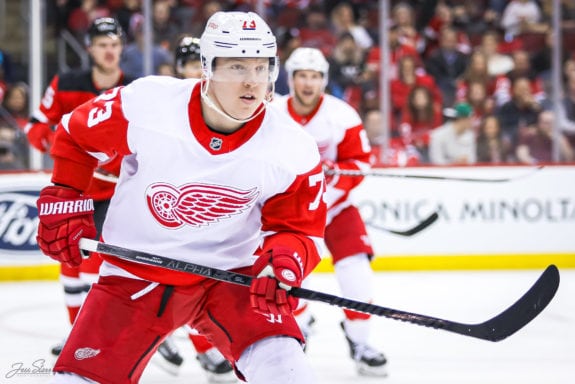
Still, Erne gets full marks for rediscovering the offense that made him such an interesting acquisition by Yzerman before the 2019-20 season. I think he is tailor-made for a fourth line energy role; it never made sense to me when people were hoping to see him bumped up in the lineup. He was producing because of where he was at in the lineup, not in spite of it. There’s no doubt that he had a successful 2020-21 season – now the key becomes repeating it next season.
Luke Glendening
Like Gagner, when you take Glendening for what he is, you can appreciate him and what he brings. I wrote “Glendening good block” more times than I care to count, and his overall commitment to doing what his team needs from him earns him plenty of points in my book. He gives you everything you’re looking for in a fourth line center, but he isn’t without his faults.
There were a few times where I noted that Glendening wasn’t making the smartest decisions with the puck. There were other times where he was in a prime position to score or get a good opportunity, and his offensive limitations prevented him from cashing in. I don’t fault him for being a fourth liner, but it’s one of those situations where you can’t help but wish that somebody with a bit more skill (Rasmussen?) was there to take the shot. All-in-all, he was a positive player for the Red Wings, and I would not be surprised at all if Yzerman brought him back this summer.
Bobby Ryan
Like Fabbri, Ryan was held back by injuries this season. In 33 games, he flashed the high-end skill and offensive awareness that made him the first player selected after Sidney Crosby in the 2005 draft. However, at 34 years old, he is more of a complementary player, but a damn good one at that. The Red Wings used him almost exclusively in a top six role this season – that was probably a big reason why he ultimately chose to sign with Detroit – but it’s pretty clear to me that he is more of a third line guy at this point in his career.
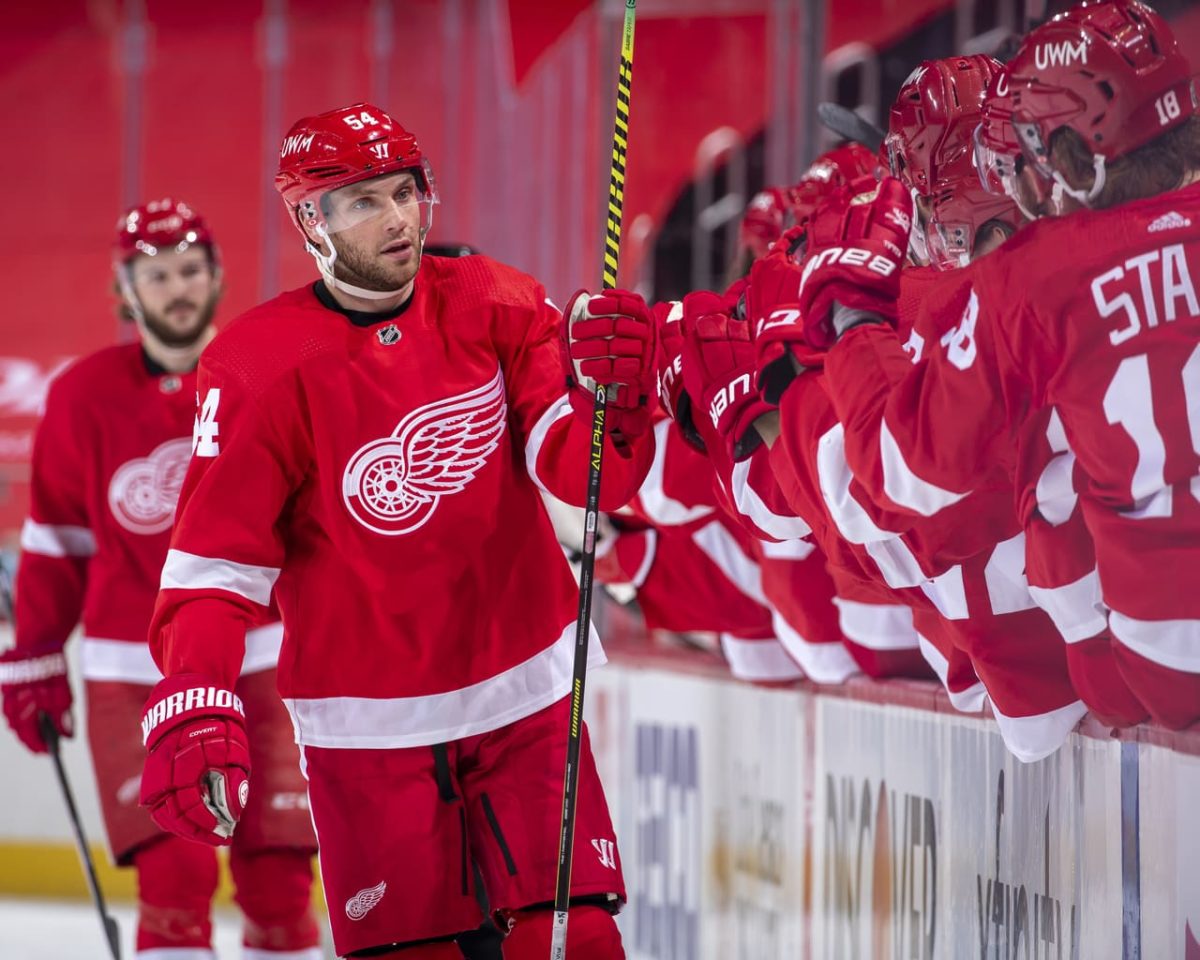
Ryan’s instincts were what gained my attention the most. Whether it was a sneaky play to move the puck forward or just his knowledge of where to go with the puck, those are the types of things that you hope players like Zadina and Rasmussen can learn. He’s a fan-favorite to return next season, and I’m certainly not opposed. However, if I had to choose between him and a guy like Gagner, well, I think you know what my choice is.
Darren Helm
As a member of the 2008 Stanley Cup-winning team, I think Red Wings fans will always have a special place in their heart for Helm. This was his 14th season representing the winged wheel, and if this is it for the 34-year-old, he can rest easy knowing he had a solid career. That being said, he was still a slight positive force for the Red Wings this season.
Yes, it can be frustrating to see Helm’s speed earn him breakaways that he has no idea what to do with, but I’d rather see the puck head in that direction than the opposite one. He was a solid defensive force for Detroit this season; I actually think he would have served another team’s penalty kill well had he been picked up at the trade deadline. While this clearly isn’t the same player that recorded 33 points during the 2014-15 season, this is another guy that can provide energy and defense from down the lineup. All of that considered, I think the Red Wings would be better served to give a guy like Givani Smith a look in his place next season.
Evgeny Svechnikov
With 21 games with season, not only did Svechnikov barely meet the cut-off point of this exercise, but he also played in the most NHL games he ever has in a single season. He recorded three goals and eight points, but five of those points came within his first eight games this season. Five points in eight games is pretty good; three points in 13 games isn’t as promising.
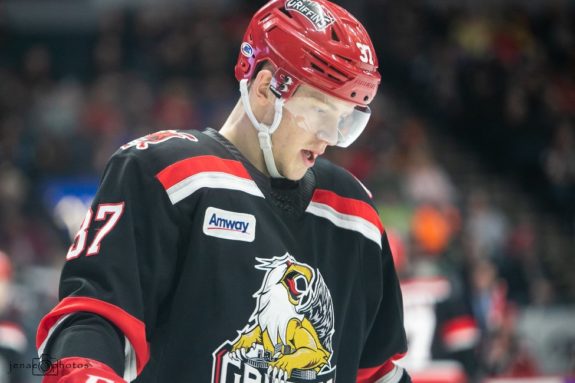
When he earned positive notes from me, he was decisive and effective with the puck. His negative notes came from moments of hesitancy and overall ineffectiveness. While I had him as a positive player, it was close enough that I honestly consider him more of a neutral player this season. With only 41 NHL games to his name, I hesitate to say the book is out on him. However, I feel confident in saying that this is a third line player that needs to be put in advantageous situations in order to be effective. Quite frankly, I don’t expect him to be back with the Red Wings next season.
Vladislav Namestnikov
Namestnikov had the opposite trajectory as Mantha in my eyes. He was a solid two-way player that knew how to sustain a cycle in the offensive zone in the first half of the season. Somewhere in the latter half, his game really fell off in my eyes, and his overall lack of production outside of empty net goals (five of his eight goals were empty-netters) really put a damper on what was a promising start for the Russian forward.
To be fair, his two-way play was still there at the season’s end, and that’s something the Red Wings should be able to count on heading into next season, granted he’s still with the team. I have Namestnikov as a neutral player, so there are definitely worse options out there. However, you have to hope that he rediscovers some of the offense that made him such an intriguing player in his early days with the Tampa Bay Lightning.
Mathias Bromé
Bromé mirrors Svechnikov in that he was a negative player that was so close to even that I consider him more of a neutral force. In some ways, I feel so bad for this player. He played a respectable game on the ice. You could tell at times that this was a man that had already played professional hockey for some time before heading to Detroit. He just had zero puck luck, and he didn’t really have the skill or any other tools to make up for it.
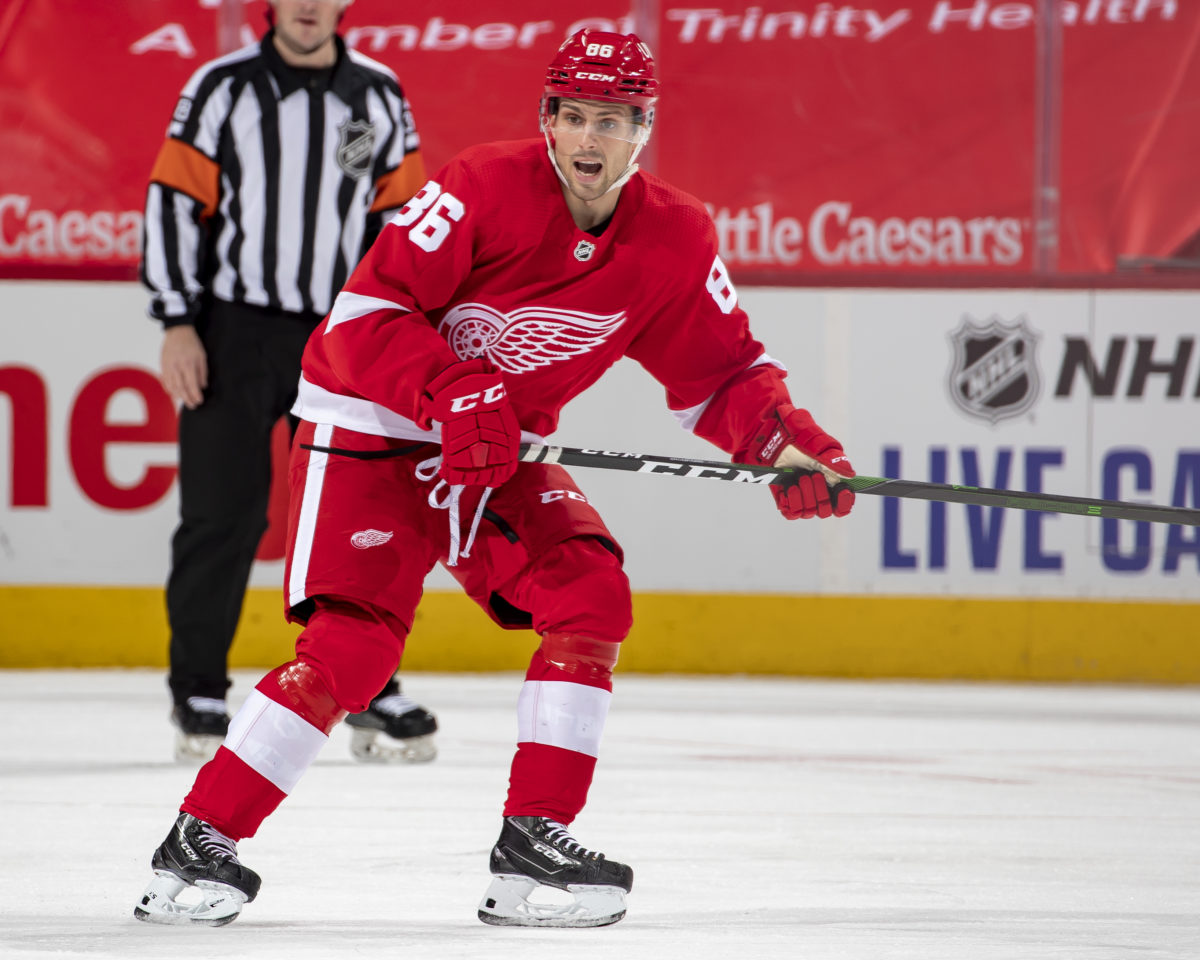
In all honesty, I think this player would excel at the AHL level. The problem is that he didn’t come to North America to play minor-league hockey. It does not surprise me one bit that he has already signed a deal to head back overseas. Go light it up over in Switzerland, Mathias. I know you will.
Valtteri Filppula
I won’t spend too much time on the last two forwards. Filppula’s game got a lot better down the stretch after spending a good chunk of the season on the taxi squad. Even with that good stretch of play, it wasn’t enough to cover up for the fact that his best hockey is behind him.
Frans Nielsen
For what it’s worth, I was actually impressed by how many times I noticed Nielsen making solid defensive plays, whether it was at even strength or the penalty kill. However, the offensive side of his game has almost completely disappeared. Too many ugly passes. Too many times getting beat by a player with more mobility.
Red Wings Defense
Troy Stecher
Boy toy Troy from Detroit did God’s work at times this season. There was a period of time where he and Marc Staal formed one of the best pairings in the league, analytically speaking, and it wasn’t because of the guy the Red Wings were bribed into taking on. Stecher showed himself to be a battler in his own end, and he was able to add some offense to boot.
Ideally, you’d like to see Stecher utilized on the third pairing in a situation where the coach can pick and choose his match-ups. He proved himself to be capable of handling tough assignments this season, but like another right-handed defenseman on this team, I think he was playing just a bit above his ideal placement. All this being said, he’s a warrior on the blue line who seems like a genuinely good dude, and Yzerman has him signed for another season at just $1.7 million.
Jon Merrill
It turns out that Yzerman knew what he was doing during last year’s free agency period – who would have thunk? While Merrill now plays for the Montreal Canadiens, there’s a reason why people like play-by-play announcer Ken Daniels and The Athletic‘s Max Bultman throw his name out as a possibility to return to Detroit this offseason (From “Projecting the Red Wings’ 2021-22 lineup: How Jakub Vrana, prospects could fit”, The Athletic, 4/14/21). He was a no-nonsense defender for Detroit that didn’t ever try to be something he’s not – and he did it at a bargain price.
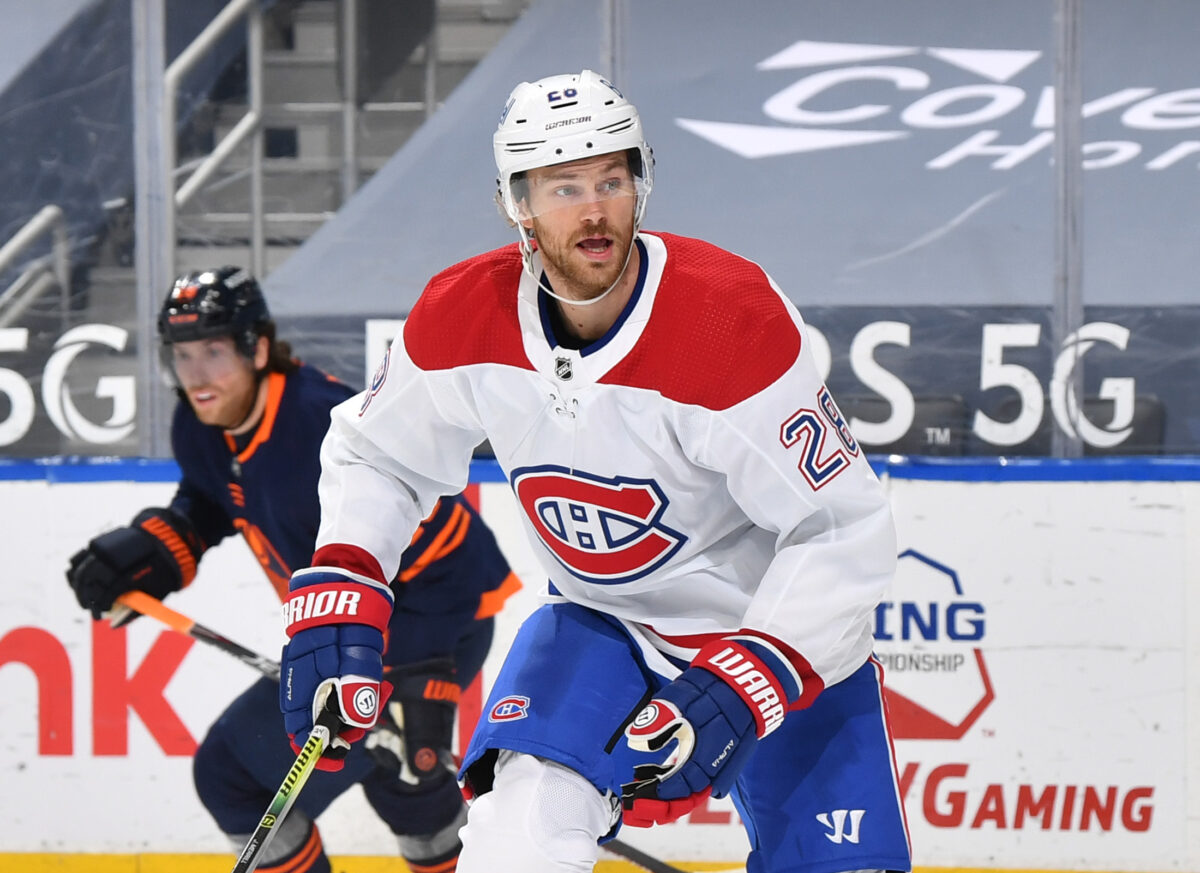
Merrill’s best days with Detroit were in the front half of the season (following his time on the Covid protocol list). He was stapled to the third pairing and was leaned on in defensive situations. He finished his time with the Red Wings with a plus/minus rating of plus-2 – an impressive feat considering only three other players on this list finished positive in that regard – and only looked out of place once he was elevated to the top pairing. It turns out that using a third-pairing guy on the top pair isn’t a formula for success – who knew!?
Filip Hronek
I was NOT impressed by Hronek in the first half of this season. By my observations, he was one of the team’s worst players during that half, looking overmatched on a regular basis while also not contributing much of the offense that makes him such an enticing player at just 23 years old. He redeemed himself in a big way during the second half by making defensive plays that he simply wasn’t before, as well as flashing some of those offensive instincts.
I’m still a little disappointed in his production this season, but his P/G was only .02 shy of last season’s rate, so I don’t feel like I can hold it against him too much. Like Stecher, Hronek played above his optimal position; he averaged over 23 minutes of ice-time this season as the team’s top defender, but I strongly believe he is better suited for the second pairing. If top prospect Moritz Seider can quickly acclimate to the NHL, there may not be a bigger individual benefactor than Hronek.
Danny DeKeyser
This is another case where I’m wondering if I have some bias showing. As a fellow Western Michigan Bronco, I’ll admit that I want to see DeKeyser do well, but it must be stated that the man with the most seniority on the Red Wings’ blue line looked absolutely lost at times this season. Yet here he is finishing out as a top-four defenseman for the Red Wings in my eyes.
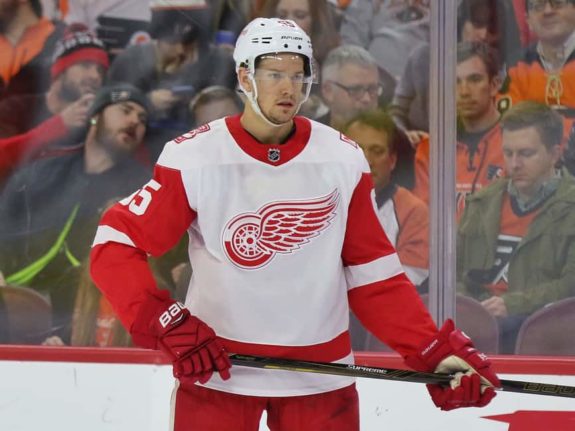
Despite the obvious toll that back surgery had on the 31-year-old, he is one of those aforementioned three players to finish with a positive plus/minus rating for the Red Wings. The only times I invest much stock into the plus/minus statistic is when a player is minus while playing for a good team, and when a player is plus with a bad team. DeKeyser fits into the latter category, and his play did improve down the stretch this season. With one more season on his deal at $5 million, Yzerman and company have to hope that his strong finish is a sign of what’s to come next season.
Christian Djoos
Djoos had the opposite trajectory as DeKeyser. There was a period of time where Djoos was one of the team’s most effective defenders, with his power play goal to end the Red Wings’ 0-for-40 drought coming as a highlight. Unfortunately, that play did not last, and his overall defensive deficiencies dragged down his promising start.
As a reminder, Djoos was picked up off of waivers before the season started. While I’m not ultimately convinced that the move was necessary, he performed about as well as you could have hoped for from a free asset. Like Bromé, he is now headed over to the Swiss league where I anticipate he will find more success than he has at the NHL level.
Patrik Nemeth
If I’m being honest, I was amazed to find out that Nemeth wasn’t the worst defender based on my observations. To phrase this another way: I can’t believe that Nemeth yielded more at the trade deadline than Merrill did. While the Swedish defender did have moments where he had strong stick and body positioning, I watched him fail to make routine D-to-D passes too many times while also frequently leaving opposing forwards unwatched in his own zone.
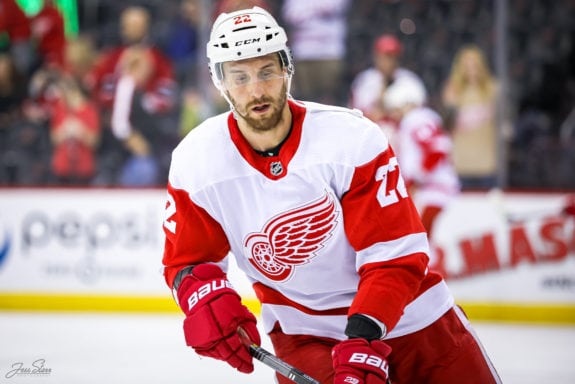
To be fair, I know Nemeth isn’t as bad as I’m making him out to be. I thought he was a bit underrated for what he did on the top pairing last season in DeKeyser’s absence, and that’s why I was so bummed-out watching him play this season. Last season’s version of this player could have yielded a second-round pick at the trade deadline, and I can’t help but wonder what kind of funk he was in that completely derailed him from being that player again this season.
Marc Staal
Staal was my most-noticed defenseman this season and if you know anything about defensemen, you know that that isn’t necessarily a distinction you want. That being said, he also tied Hronek for the most positive notes I had for a defenseman this season. In other words, he did a lot of good this season – more than some people might realize – but he did A LOT of bad this season as well.
When Staal was at his best this season, he was as active in the offensive zone as he was in his own zone. You could see the skill that made him a first round pick back in 2005, but he is far from the same player that averaged 20 to 25 minutes of ice-time a game with the New York Rangers. He was sometimes reckless with the puck, and other times he was painfully unaware of opposing players within his vicinity. He’s a savvy veteran from a talented family, and the second round pick the Rangers gave Detroit to take him on should bring in a nice prospect, but I’m sure I’m not alone in saying that the Red Wings can afford to move on from him this offseason.
Red Wings Goaltenders
Note: except for extraordinary things, both good and bad, I judged the Red Wings’ goaltenders based on their performance as a whole on a given night. For example, I would “punish” a goalie for giving up a soft goal, but still gave them positive marks if they did enough to give the team a chance to win. This is why scouting goaltending prospects is so tricky – their respective teams impact their play a lot, and it’s sometimes hard to discern whether or not a goaltender’s success is because of them, or in spite of them.
Thomas Greiss
Greiss finishes ahead of his counterpart here mostly because he played more games, and therefore I could give him more positive and negative notes. In actuality, I think Detroit’s two goalies were fairly even, and I’m also probably being a little too lenient on Greiss for his poor play in the opening months of the season. At the end of the day, though, the 35-year-old German had both of the Red Wings’ shutouts this season, and even earned First Star of the Week honors because of it.
Make no mistake, I saw those shaky goals he allowed throughout the season. I do think there was an element of him adjusting to life in Detroit after spending the last few seasons playing behind Barry Trotz’s New York Islanders. But to that point, his advanced analytics this season were actually better than they were last season with the Islanders. His second half of the season was STRONG. If he can carry that over to next season, the Red Wings should have themselves one-half of a solid goaltending tandem.
Jonathan Bernier
I’m so glad that Greiss finally figured out his *stuff*, because it seemed for a while there that the only goalie capable of winning games for the Red Wings was Bernier. The 32-year-old continued his strong play from last season and, with the exception of his multiple trips to the injured list, was a consistent positive force for the Red Wings. He had a few rough outings here and there, but so did every other goalie in the NHL.
I’ve made the case before: I think Bernier is the perfect bridge between now and when the Red Wings find a more permanent solution in the crease. He’s an average goaltender that has played way above average in the last two seasons with Detroit. I saw nothing this season that makes me think he can’t do it again next season.
Final Thoughts
I’m not going to grade these players – I’ll leave that to my colleague Tony Wolak – but I will say that the improvements this team made from last season to this one were observable as I carried out this process. The low-event style preached by coach Blashill this season did stifle some of the team’s offense, but it also put them in a position to make good reads and counter-attack, thus leading to a higher win total this season despite playing in fewer games than last season. A lot of my positive notes were about doing the things that lead to goals; hopefully as more talent joins the team, I’ll have more positive notes to write in regards to actually scoring goals.
One last note: this list is entirely subjective to my observations. I’m sure I missed some things, and I’m sure I’m overvaluing some other things. If you did this same exercise, we might reach vastly different conclusions, but that’s the beauty of watching sports – almost everything is subjective and up for debate.
These are my observations. What do you think? Let me know how crazy you think I am in the comments section, and be sure to share some of your observations as well!
Want more Red Wings content? Tune into The Hockey Writers’ Grind Line — a weekly show on YouTube and Facebook. We stream weekly on The Hockey Writers YouTube channel. Check out our most recent show below, and make sure you subscribe to the channel so you don’t miss any upcoming shows.